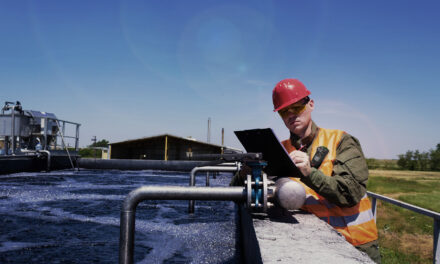As the sun continues to shine on the UK throughout June, July and likely into August, Develop Training Ltd (DTL) is reminding employers that it pays to ensure a comfortable working temperature, whatever the elements throw at us.
Many people are aware there is a minimum working temperature indoors (usually 16C, or 13C where the work being done is strenuous) but that there is no equivalent statutory level for how hot a workplace can be. However, that doesn’t mean employers can ignore soaring temperatures on days when the sun shines or in hot workplaces.
The Health and Safety Executive states that for indoor working, employers must provide:
- local heating or cooling where a comfortable temperature cannot be maintained throughout each work room
- thermal clothing and rest facilities where necessary
- heating systems which do not give off dangerous or offensive levels of fume
- sufficient space in work rooms.
As DTL specialises in training for the construction and energy sector, it points out that employers should also look closely at outdoor working conditions and ensure employees are sufficiently equipped and trained for safety and comfort.
The HSE website points out the dangers of long term exposure to the sun, a real risk for operatives who routinely work outside during the summer months, with skin cancer now one of the most common forms of cancer in the UK. Sensible clothing, shelter and frequent rest breaks are among strategies for dealing with sun exposure.
Chris Wood, Chief Executive of DTL, comments: “The key phrase employers should consider is thermal comfort. Put simply, that’s a measure of whether or not someone feels too hot or too cold, or comfortable. A whole range of factors come into play, including humidity, airflow, clothing, physical tolerance and personal preference. But it is worth making the effort to ensure your workforce is comfortable. There is plenty of evidence to show that staff who feel comfortable will perform better and be safer. It is also a legal requirement, so employers and managers need to be aware of the law and ensure they and the workforce are trained and compliant.”
As specialists in training for health and safety compliance, DTL points out that managing thermal comfort not only improves morale and productivity but also health and safety. Uncomfortable conditions can compromise the ability of workers to make decisions and perform manual tasks. They may rush jobs to get out of the heat or the cold. The temptation to dispense with PPE is increased when the weather is hot. Employees will tire more quickly in stressful conditions, raising the likelihood of mistakes.
Conversely, the risk of overheating – whether that is outdoors in the summer or indoors in, for example, a glass works – is greatly increased when people cannot adapt their behaviour to cope, for example by removing heavy safety clothing or moving away from heat sources.
All of this clearly has implications for Health and Safety, and, as the HSE points out, employers “should be aware of these risks and make sure the underlying reasons for these unsafe behaviours are understood and actively discouraged and/or prevented”.
As well as the benefits in morale and productivity, there is a legal driver for this. In addition to the Workplace Regulations, the Management of Health and Safety at Work Regulations 1999 require employers to make a suitable assessment of the risks to the health and safety of their employees, and take action where necessary and where reasonably practicable.
The temperature of the workplace is one of the potential hazards that employers should address to meet their legal obligations. Employers should consult with employees or their representatives to establish sensible means to cope with high temperatures.
Mr Wood adds: “Monitoring working conditions can be done simply by asking people whether or not they are comfortable, and monitoring complaints. Although it will not always be possible to please everyone sharing a workplace, ensuring that as many as possible are happy with the conditions is obviously desirable.”
DTL provides a range of training to address health and safety in the workplace, including managing compliance with legislation on working conditions.







